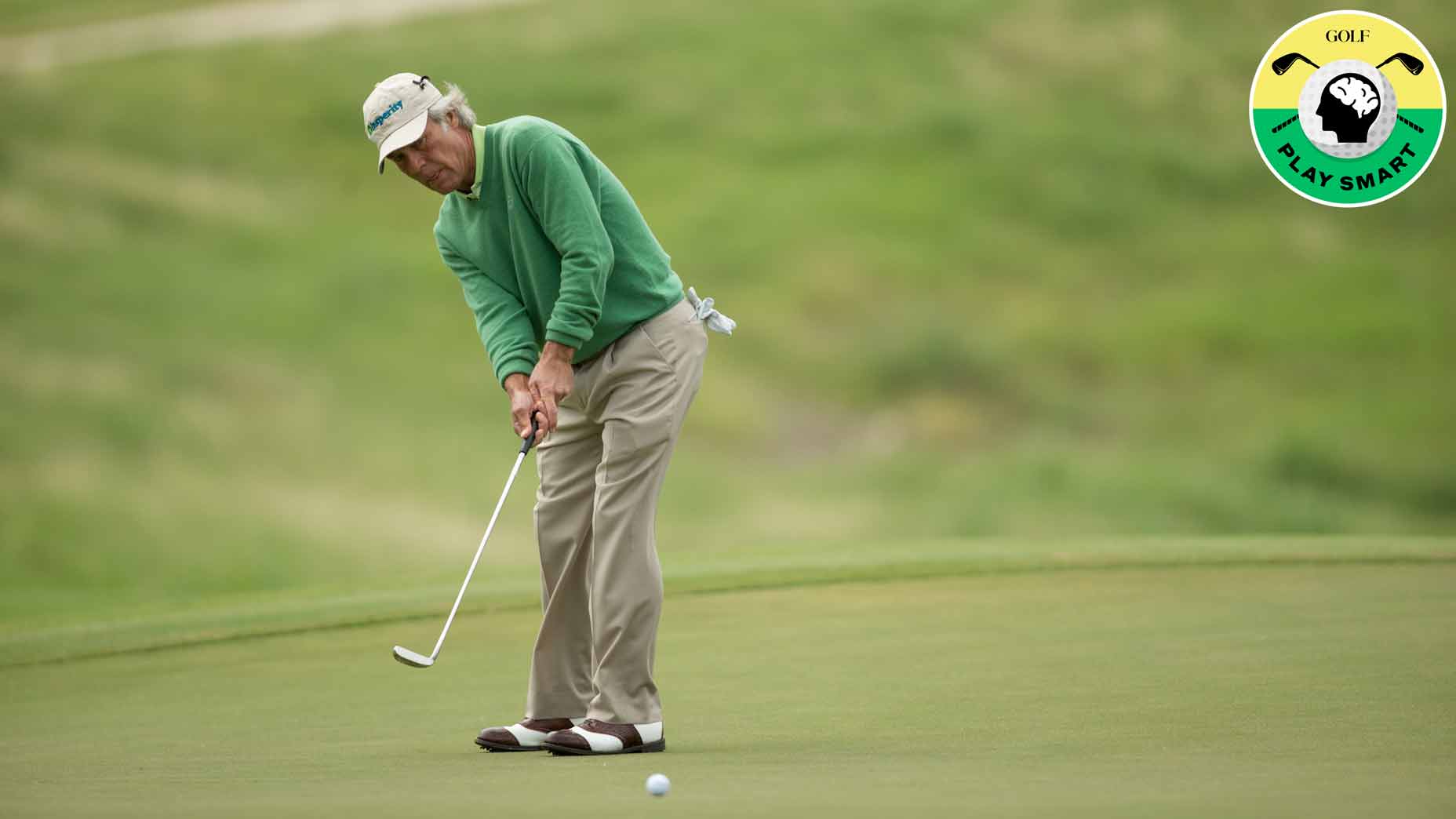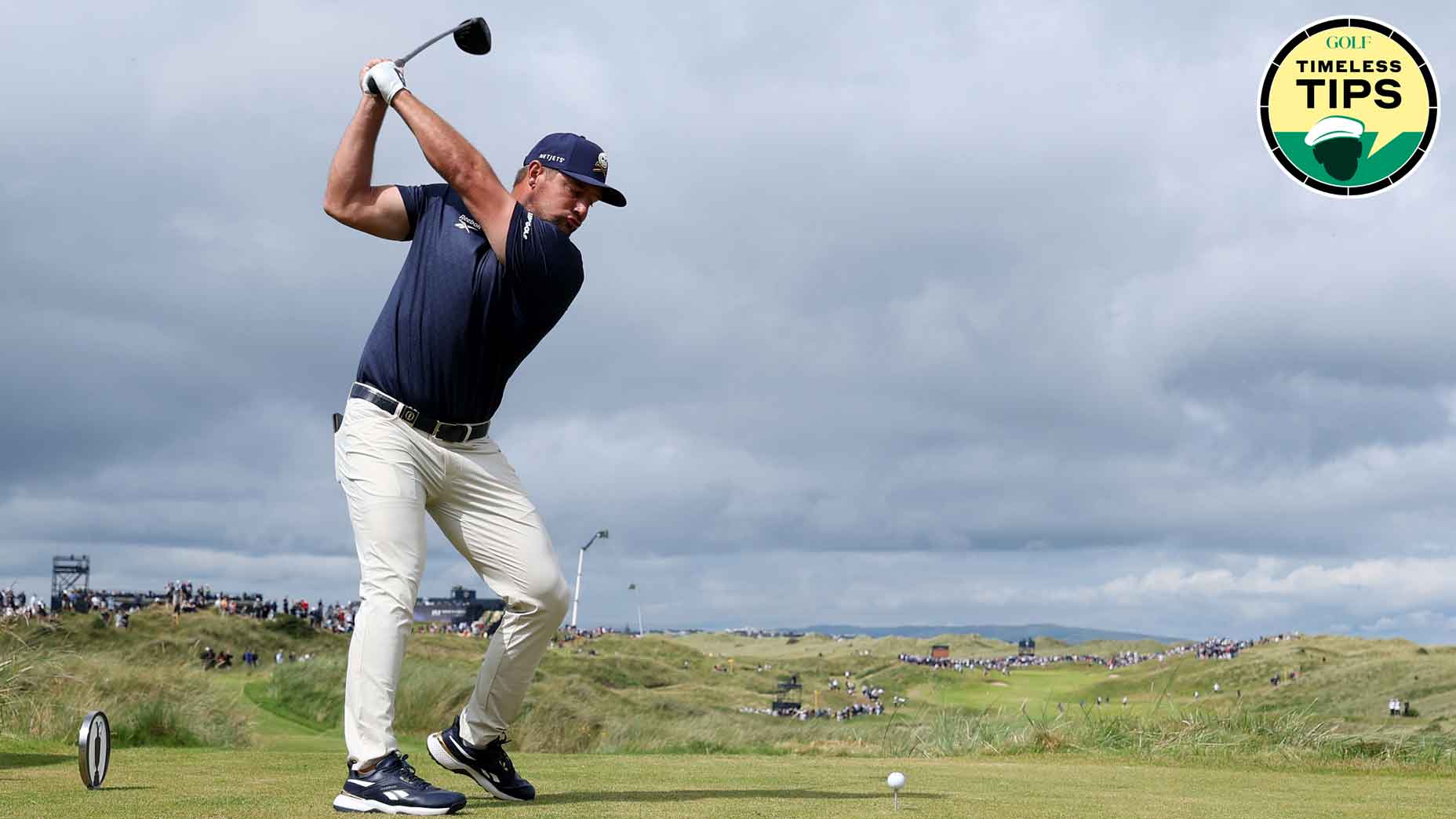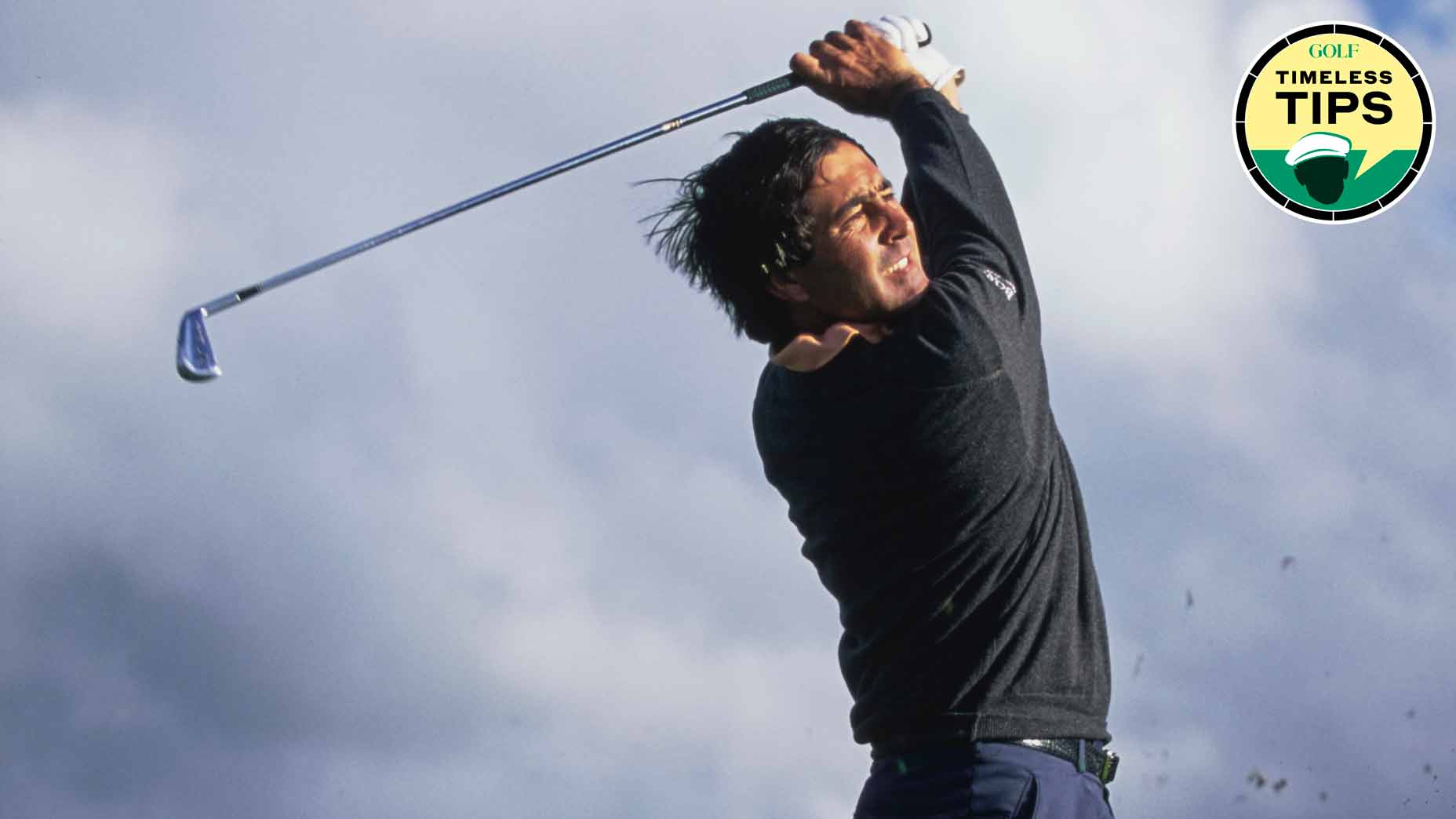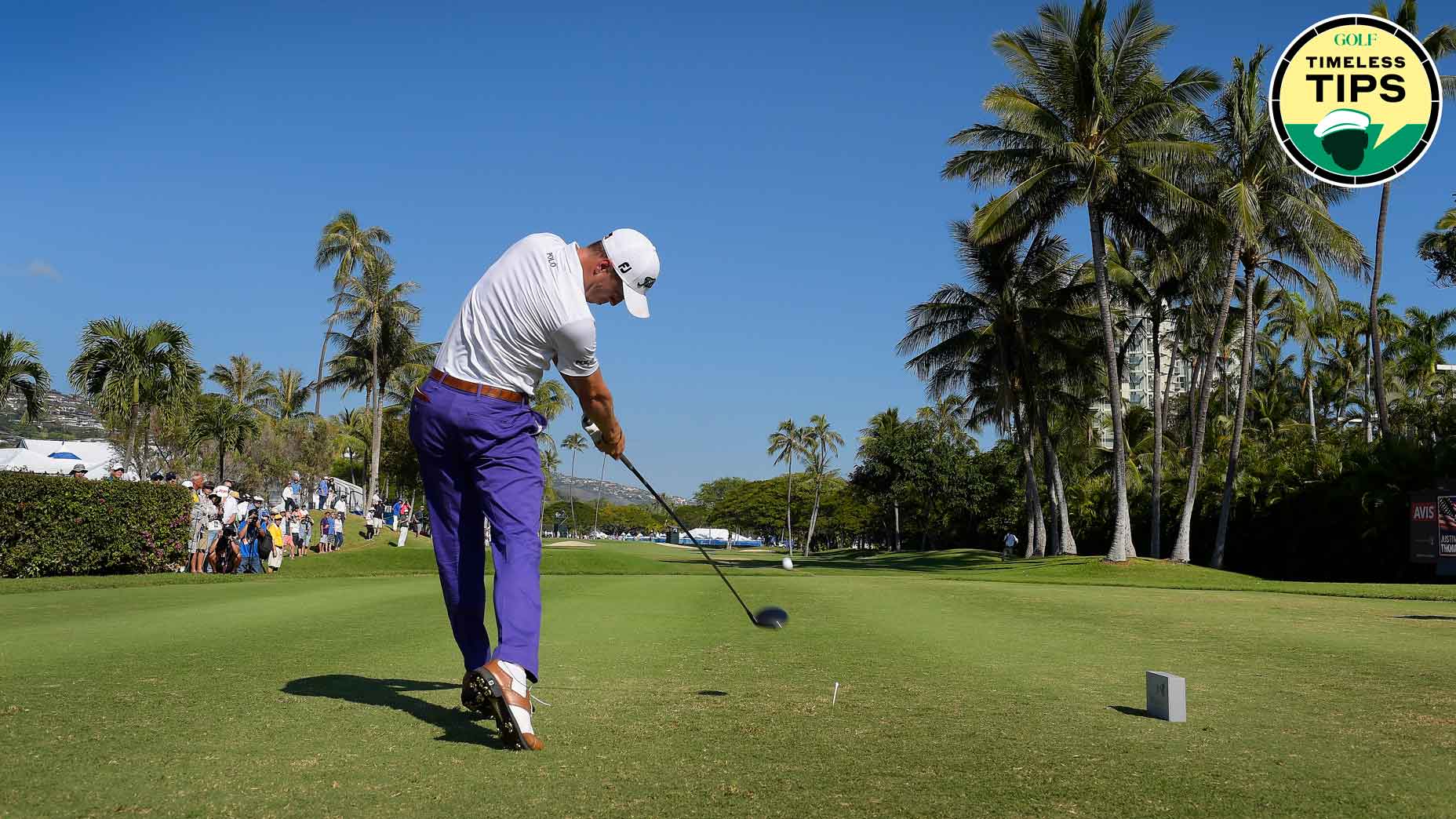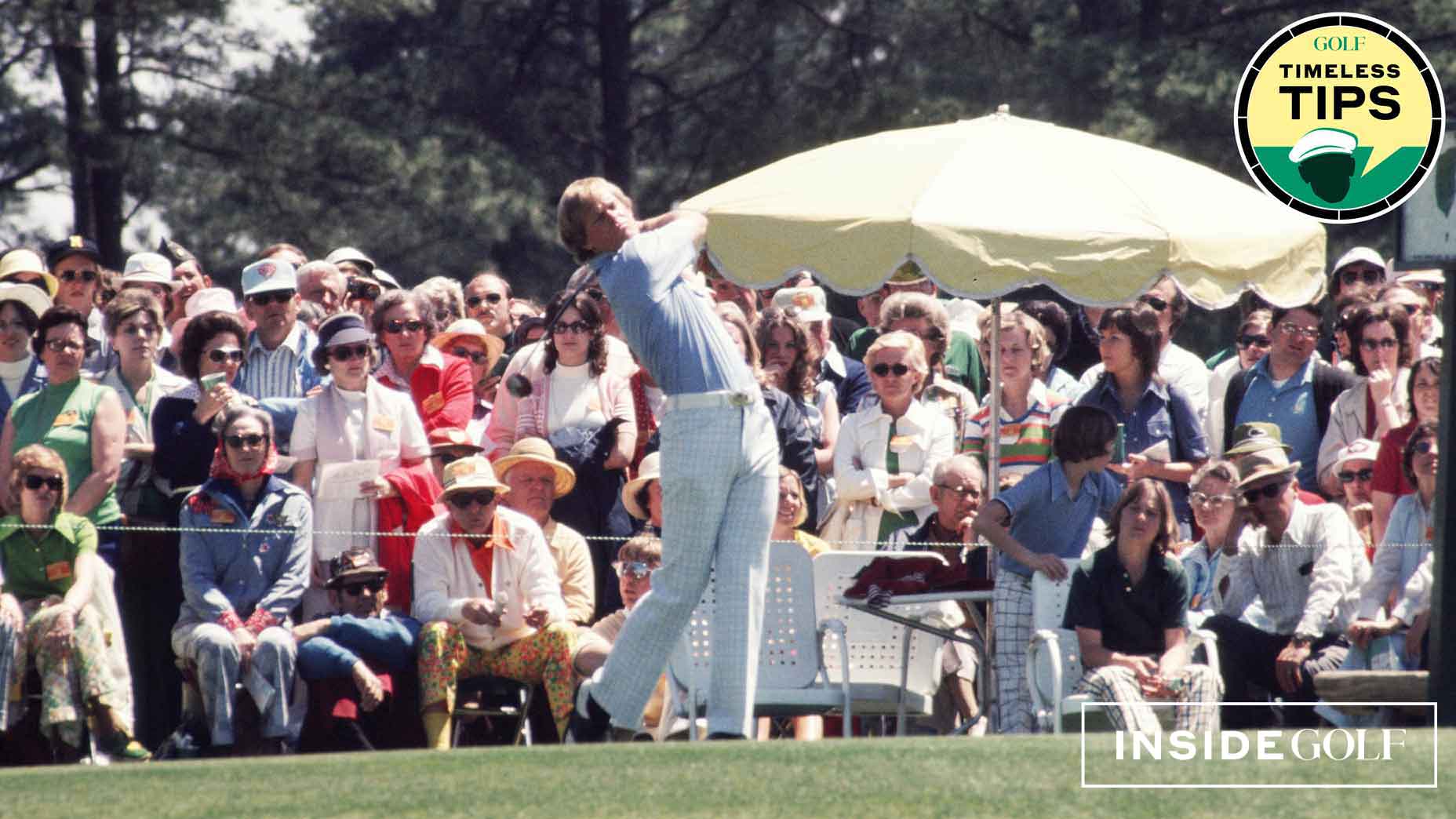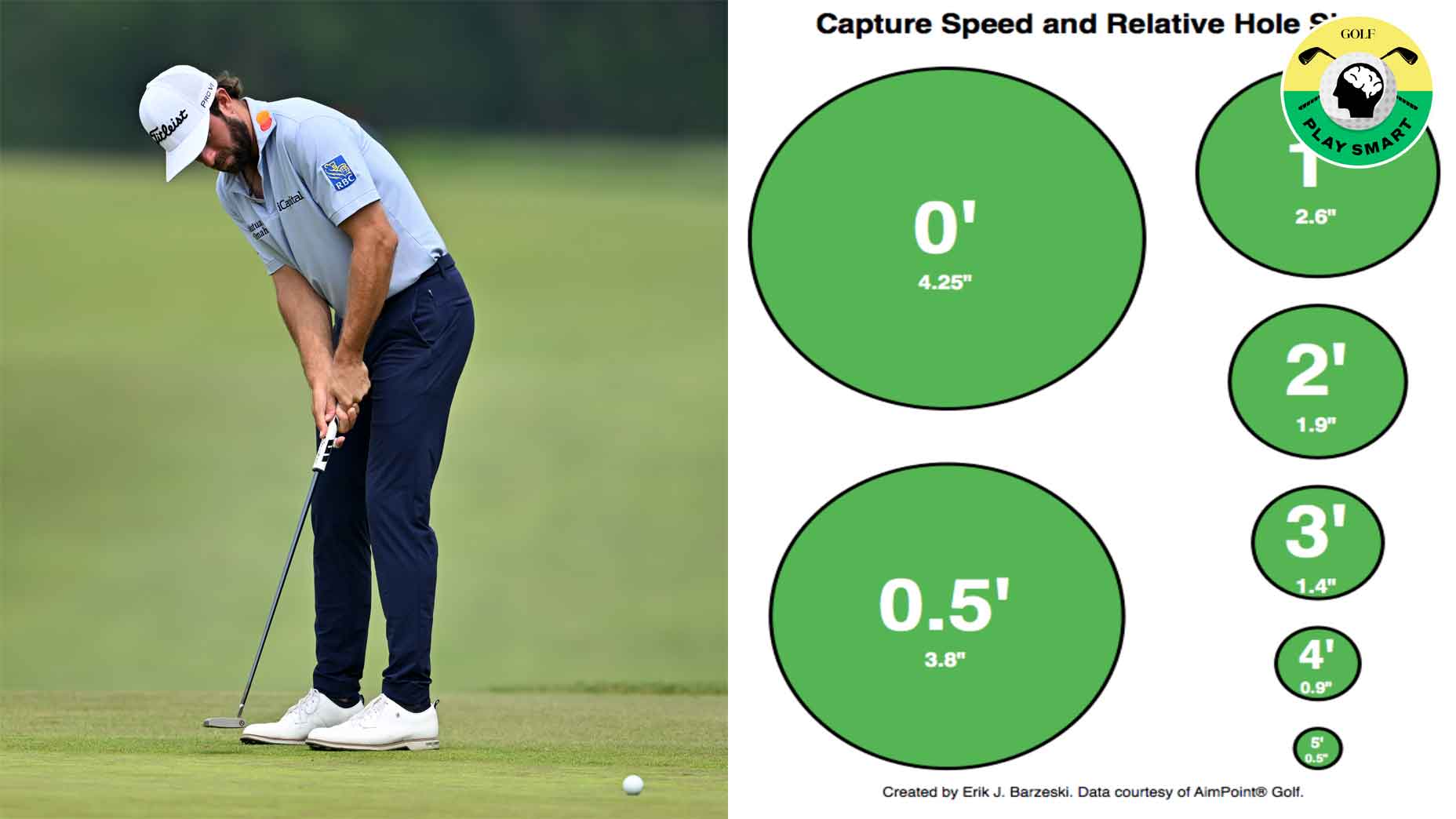Golf instruction is ever-evolving, but the best advice stands the test of time. In GOLF.com’s new series, Timeless Tips, we’re highlighting some of the greatest advice teachers and players have dispensed in the pages of GOLF Magazine. This week, we look back at our August 1974 issue where Ben Crenshaw shared his three keys for great putting. For unlimited access to the full GOLF Magazine digital archive, join InsideGOLF today; you’ll enjoy $140 of value for only $39.99/year.
If you want to become a great golfer, making your flatstick a weapon is non-negotiable. You can hit the ball as flush as ever, but if your putting lacks, you’ll never quite live up to your potential. A steady putter can erase mistakes and strike fear into the hearts of your opponents. With the ability to sink putts, you’ll never find yourself out of a hole.
Contemporary stars like Jordan Spieth and Cameron Smith have won majors using this strategy, and the legends of yesteryear found similar success. Ben Crenshaw is a prime example. Although he was never the longest or straightest hitter, he rode his trusty 8802 Wilson putter to two green jackets and 19 PGA Tour titles.
As his longtime instructor Harvey Penick once famously said, “A good putter is a match for anyone. A bad putter is a match for no one.” Crenshaw embodied that throughout his entire career.
Check out below for Crenshaw’s three keys for being a great putter from the August 1974 issue of GOLF Magazine.
Crenshaw’s 3 keys for great putting
To my mind there are three key factors to good putting: even tempo, a solid hit, and sound thinking. What they add up to is confidence, and that to me is 70 percent of putting. The other factor, of course, is a little luck. But, since we can’t control luck, let’s concentrate on those factors we can control.
All great putters have good tempo. I think this is vital but all too easy to overlook. I know that in my own game I work to keep the same tempo on every shot from a drive to a putt, and to keep everything very smooth. But to coordinate my putting stroke, I use a gimmick that you’ll find very useful.
Ben Crenshaw’s brilliant advice on how to become a great putterBy: Zephyr Melton
I feel that I am taking the club back and through like the swing of a metronome. Back on a count of “one,” through on a count of “two.” But I should emphasize that this isn’t a fast “‘one-two’’ — I put that metronome on a very slow setting. This even metronome beat is the key to my whole stroke.
Like most of the players on tour I am a combination shoulder/arm putter. This simplifies putting for me because I can use basically the same style and tempo both on short and long putts. A *‘wrist’’ putter is forced to use some arm and shoulder on longer putts — he has to keep two styles in working order.
Moving from short to long putts, I don’t have to vary my stance. I just stand a little taller to make it easier to execute a longer stroke. Nor do I vary my basic stroke — I just swing a little farther back. I have a longer backstroke than many on long putts. But this is because, as I’ve said, I like to keep the same tempo going on all putts. If you do that, the stroke must be longer to give you the required distance.
I personally find it more comfortable to use just enough wrist to keep the action fluid. However, some very great putters — Bob Charles, particularly — “lock out’’ the wrists entirely and swing the arms and club in one piece straight from the shoulders. See which method suits you.
A lot of the amateurs I’ve played with just don’t hit putts solid. As a result, they’re short of the hole one time and past the hole the next. The first fundamental here is a sound grip. As in the long game, you should have both palms parallel to the target. You can test this in your own grip by opening the hands as I have done in the illustration below.
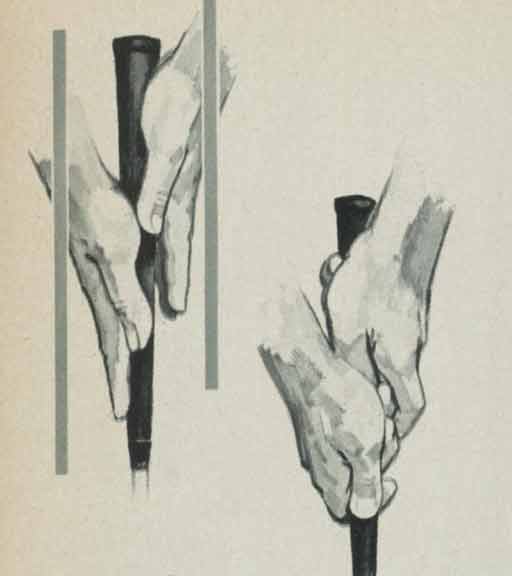
This position of the hands helps you swing the putter back and through on line. Also note the position of my thumbs. Unlike the full swing grip, where the thumbs are slightly on the sides of the grip, in putting the thumbs should lie on the top of the grip. This gives you better touch.
I use a square stance in putting, which is, of course, another aid to a square hit, but the main thing I work on is to set up so that I can not only hit it solid but get the ball rolling with overspin. For these reasons, I play the ball forward in my stance just inside my left foot. I can then concentrate on meeting the back of the ball squarely and swinging the putter right on through with a unified effort of both hands.
A neglected point connected with a solid hit is that you must hit the ball out of the center of balance of the putter. On my putter this point is clearly marked, but on some putters it’s not marked, and this can lead to off-center hits. To establish the center point, hold the putter up in front of you and tap a ball gently along the putter face.
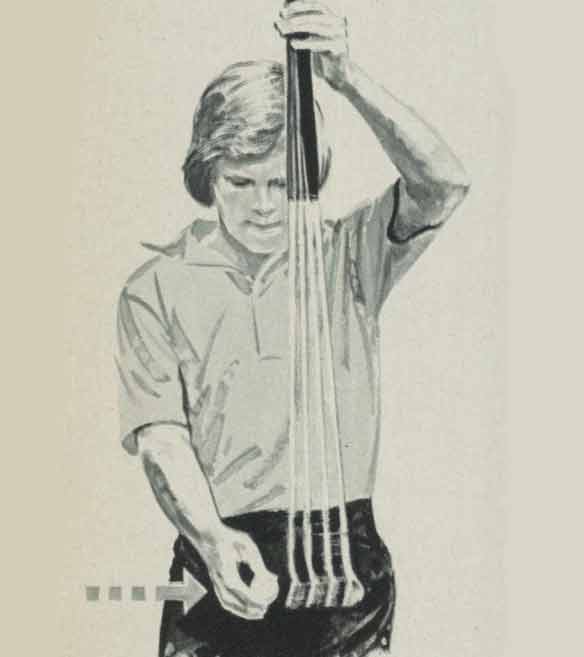
The point you’re looking for is where the putter no longer twists one way or the other. Mark this point in some way. You’ Il find that it is not necessarily int he exact middle of the clubface. It depends how the putter is weighted. About the only time you shouldn’t hit the putter out of the center of balance is on very fast greens. Stroking a little toward the toe of the putter helps here as it gives a “deader” hit and the ball won’t go as far.
Sound thinking in putting is first and foremost clear visualization of the putt you face. You have to find a method of “seeing” the ball go in — before you ever draw the club back. I strongly recommend visualizing a “track” putter-width wide from the ball to the hole. This gives me a more comfortable feel than putting down a narrow “line.” On breaking putts, I just pick a spot to the left or right of the hole and aim my “track” right over it.
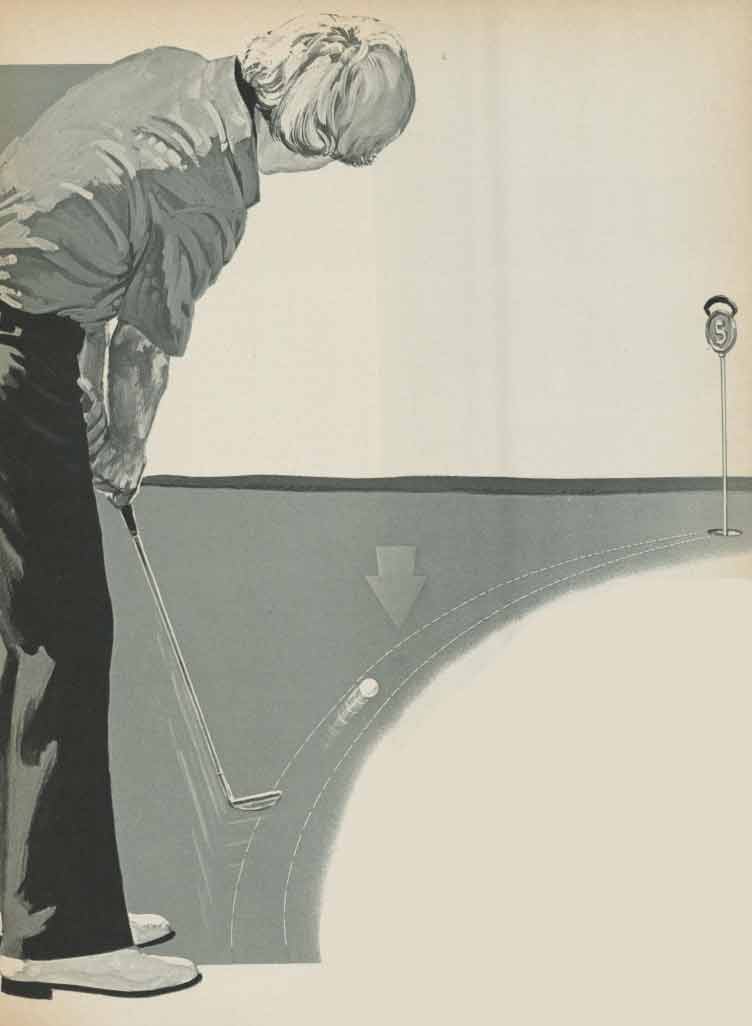
Second, I think that on longer putts it pays to be a “lag” putter, unless the percentages are with you. For example, when the greens are heavy, or it’s an uphill putt with no break. Bobby Jones once pointed out that the putter who is always past the hole never does stop to consider that he has to hit the very center of the hole for the putt to drop, whereas if the speed is right, the ball can drop from the front, the sides or the back of the hole. I agree 100 percent. a
Third, I never think about my stroke when I’m out on the course, and neither should you. Just concentrate on hitting the back of the ball, and staying down through to the finish of the stroke. That and visualizing your track to the hole and the spot is quite enough to think about.
Latest In Instruction

Zephyr Melton
Golf.com Editor
Zephyr Melton is an assistant editor for GOLF.com where he spends his days blogging, producing and editing. Prior to joining the team at GOLF, he attended the University of Texas followed by stops with the Texas Golf Association, Team USA, the Green Bay Packers and the PGA Tour. He assists on all things instruction and covers amateur and women’s golf. He can be reached at zephyr_melton@golf.com.

